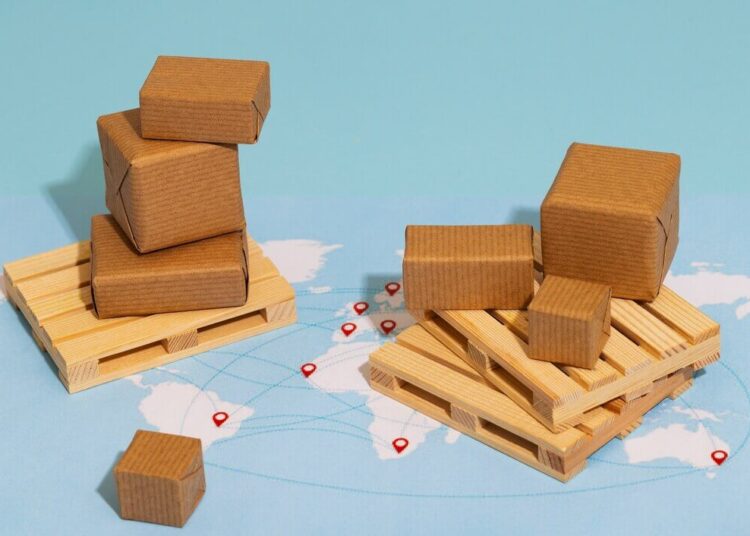When we think of global trade, supply chains and logistics, the palette often goes to anyone’s attention. Nevertheless, these wooden or plastic platforms are the backbone of global commerce. Each shipment, whether it is food, pharmaceuticals, or consumer goods, probably travels on a pallet at some point. This is why the rules and standards of the palette industry are so important – they ensure security, quality and compliance in international markets.
As we step in 2025, the industry’s industry is undergoing major updates in rules, stability requirements and safety guidelines. If you are the owner of a business, supplier, or logistics manager, it is not optional to be ahead of these changes – it is necessary for smooth operation. In this article, we will break the rules and standards of the most important pallet in 2025, which you need to know and how they can affect your business.
Why Regulations Matter in the Pallet Industry
The primary objective of pallet rules is to ensure that the products are safely, continuously transported, and cause issues from across the border such as insect infections or contamination. Poor quality palettes can damage the goods, prevent workplace hazards, and even cause customs delays.
Regulations also establish stability in the dimensions, materials and treatments of the pallet, making global shipping more efficient. Imagine that if every country needs its own pallet size or treatment – it will make international logistics a bad dream. Where international standard borders steps to unite practices.
Key Pallet Regulations and Standards in 2025
1. ISPM 15 Compliance (Still Mandatory, More Strictly Enforced)
International standard for phytosanator remedy number 15 (ISPM 15) is a global requirement for a wooden palette used in international shipping. For this, it is necessary that the palette should be warned or fumigated to eliminate insects.
In 2025, ISPM 15 is not new, but the enforcement is getting tight. Many countries are now random inspections, and can reject heavy fines or shipments as a result of non-compliance palettes. Businesses should ensure that their palettes are stamped with ISPM 15 mark and sourced from certified suppliers.
2. Sustainability and Carbon Reporting
Stability is no longer a discussion – this is a regulator expectation. Governments worldwide are demanding business, which reveal their carbon footprints, and the palette is part of that conversation.
In 2025, rules in the European Union and North America are pushing companies to adopt recurrence or re -purpose palette, tracking the lifestyle of the pallet and pushing to reduce landfill waste. For example:
- Reusable plastic palettes are receiving traction in industries such as pharmaceuticals.
- Recycled wooden palettes are preferred in consumer goods to reduce the effects of deforestation.
Companies that do not suit these permanent pallet options can struggle with compliance in some markets.
3. Occupational Safety Standards
The workplace is emphasizing the security officer (eg OSHA in the U.S.) palette handling standards. In 2025, the pallet is on reducing injuries with splutter, spliers or inappropriate stacking. Employers should ensure that employees receive training on pallet protection and the damaged palette is quickly removed from circulation.
4. Standardized Dimensions for International Trade
The ISO (International Organization for standardization) proceeds to stability in the dimensions of the pallet. While the U.S. Usually uses 48 “x 40” pallets, Europe prefers 1200 mm x 800 mm EUR-palette. In 2025, more logistics providers are moving towards hybrid compatibility to streamline global trade.
Internationally exported companies need to confirm which standard their trading partners accept. Using the size of the wrong pallet can increase the cost and delay shipments.
5. Hygiene Regulations for Sensitive Industries
Food, beverages and pharmaceutical industries should follow strict hygiene guidelines. In 2025, many regulators need to be washedeable, resistant to bacteria and free from harmful chemicals. Plastic palettes often meet these requirements better than wood in such cases.
6. Digital Tracking and Smart Pallets
The rise of smart logistics means that palettes are no longer platforms – they are data carriers. New standards are emerging around RFID and IOT-competent palette. These technologies help to track space, temperature and position in real time.
In fact, some regulatory agencies require traceability for high-value or sensitive items. By 2025, adoption of smart palettes is expected to increase significantly.
Regional Differences in Pallet Regulations
Even though there are many standard global, each field has unique preferences:
- The United States: OSHA is emphasizing security training, while the stability guidelines are mostly run by corporations.
- European Union: Strict carbon footprints reporting and compulsory recycling initiatives are shaping palette options.
- Asia: Rapid growth in exports is emphasizing for better ISPM 15 compliance and harmonious pallet dimensions.
- Middle East and Africa: Focus on compliance with international standards to facilitate smooth trade.
Challenges Businesses Face in 2025
While rules are meant to improve security and stability, they also create challenges for businesses:
- Cost Pressure: Permanent palettes often come with high advance costs.
- Compliance Burdon: To track the life cycle of every pallet requires better systems and records.
- Supply chain disruption: Lack of obedient palette may delay shipment.
These challenges highlight the importance of working with reliable pallet suppliers who understand the developed regulatory landscape.
How to Stay Compliant
Practical steps here can take business in 2025:
- Sources from certified suppliers – always choose palette providers who meet ISPM 15 and other relevant standards.
- Adopt palette pooling – Instead of owning a palette, consider rent or pooling services that handle and tracking for you.
- Embrace technology – RFID and IOT compliance can automate tracking and reduce human error.
- Traine your employees – proper pallet handling and safety practices reduce risk and satisfy the regulators.
- Stay informed – rules develop quickly. Regularly review the updates from international trade and logistics officers.
The Role of Trusted Suppliers
Finding the right partner makes it very easy to compliance. A reliable palette supplier will not only provide quality products, but will also guide businesses on the latest standards. If you are looking for reliable, regulation-transportation solutions, resources like sincerepallet.com can help you stay ahead of the curve.
Working with suppliers who prefer stability, compliance and innovation, ensure that your supply chain runs smoothly – without regulatory headache.
Final Thoughts
In 2025, the rules and standard of the palette industry are more than only the rules on paper – they are shaping the method of operating global trade. From pest control and stability to safety and smart technology, palette supply chain is developed into an important component of strategy.
For businesses, the key to success lies in awareness, adaptability and partnership. By working with new standards and with reliable suppliers, you can avoid expensive disruption and run your operations originally.
The palettes may look simple, but in today’s rapidly growing world of asian pinay viral trends and shifting markets, they lift the weight of compliance, safety, and stability. Make sure your business is ready for further changes.






